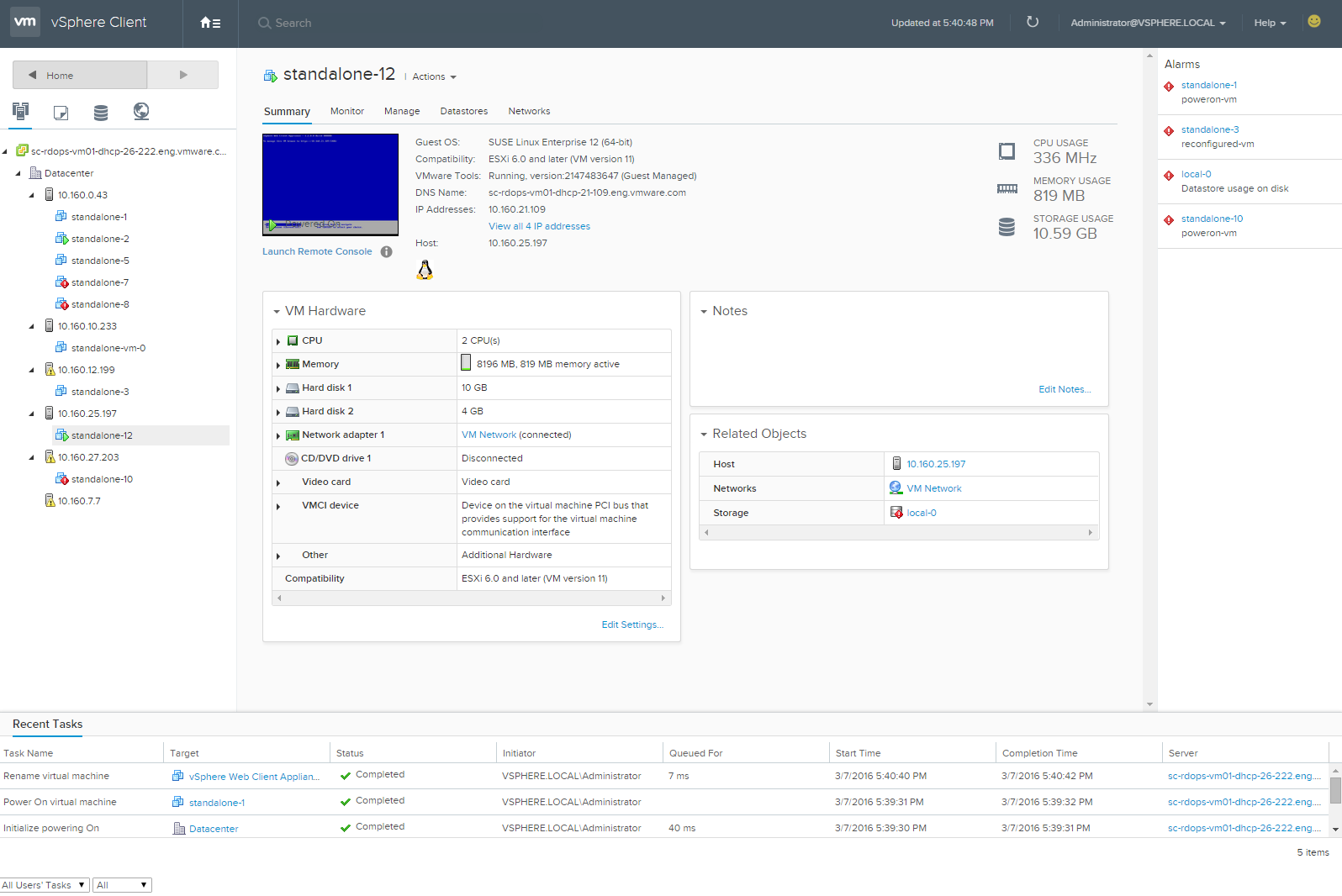

(1) Enhanced VMotion (aka Shared nothing migration).
Vcenter fat client for mac drivers#
If a new version of the VMware Tools comes with a newer version of these drivers will it really be possible to do the upgrade without a reboot? pvscsi and vmxnet3 device drivers that most people preferably use with the latest Windows versions.
Vcenter fat client for mac update#
And I wonder: How is it possible to update a Windows device driver that is in use? I am concerned about e.g. However, I am skeptical: The feature is only available for VMs running Windows Vista or later. Upgrading VMware Tools has always been a pain topic for VMware administrators, because it usually requires a reboot of the guest OS, so you needed to schedule a downtime of the machine and the application it is hosting. VMware claims that once you have the new VMware tools of vSphere 5.1 installed in a VM then you can later upgrade that to any newer version without rebooting a VM. With vSphere 5.1 the Web Client is now fully featured, and any new functionality is even implemented in the Web client only! Great news for Linux and Apple shops that were asking and hoping for a native (or platform independent) client for their preferred OS for years now. The Web Client exists with vSphere 5.0 already, but offers only a subset of the regular fat client's features. (3) The Web client is now the primary client for vCenter. So far you could use vSphere Replication only together with the Site Recovery manager (SRM) product, but with vSphere 5.1 it is now usable with vSphere only, and the best thing is: It is included in all licensed vSphere editions and does not require extra licensing. vSphere Replication allows it to (asynchronously) mirror a VM to another datastore so that it can be restarted there when the primary storage fails. (4) vSphere Replication is now available independently from SRM. Hardware support is currently limited to nVIDIA GPUs. This clearly targets VDI scenarios and will enhance the capabilities of virtual workstations.

This greatly enhances the graphics capabilities of the VM and let's it even use the GPU for computing tasks that are not display related. That means it is able to virtualize the Graphics Processing Unit(s) (GPU) of the host and provide it to a VM as a vGPU. (5) ESXi 5.1 comes with hardware accelerated 3D Graphics support. The VMware Blogosphere is already flooded with lists of what's new in this release, so I decided to elaborate on my personal top 5 new features and some less known new features instead of repeating the news over and over.

This week VMware announced vSphere 5.1 at VMworld in San Francisco.


 0 kommentar(er)
0 kommentar(er)
